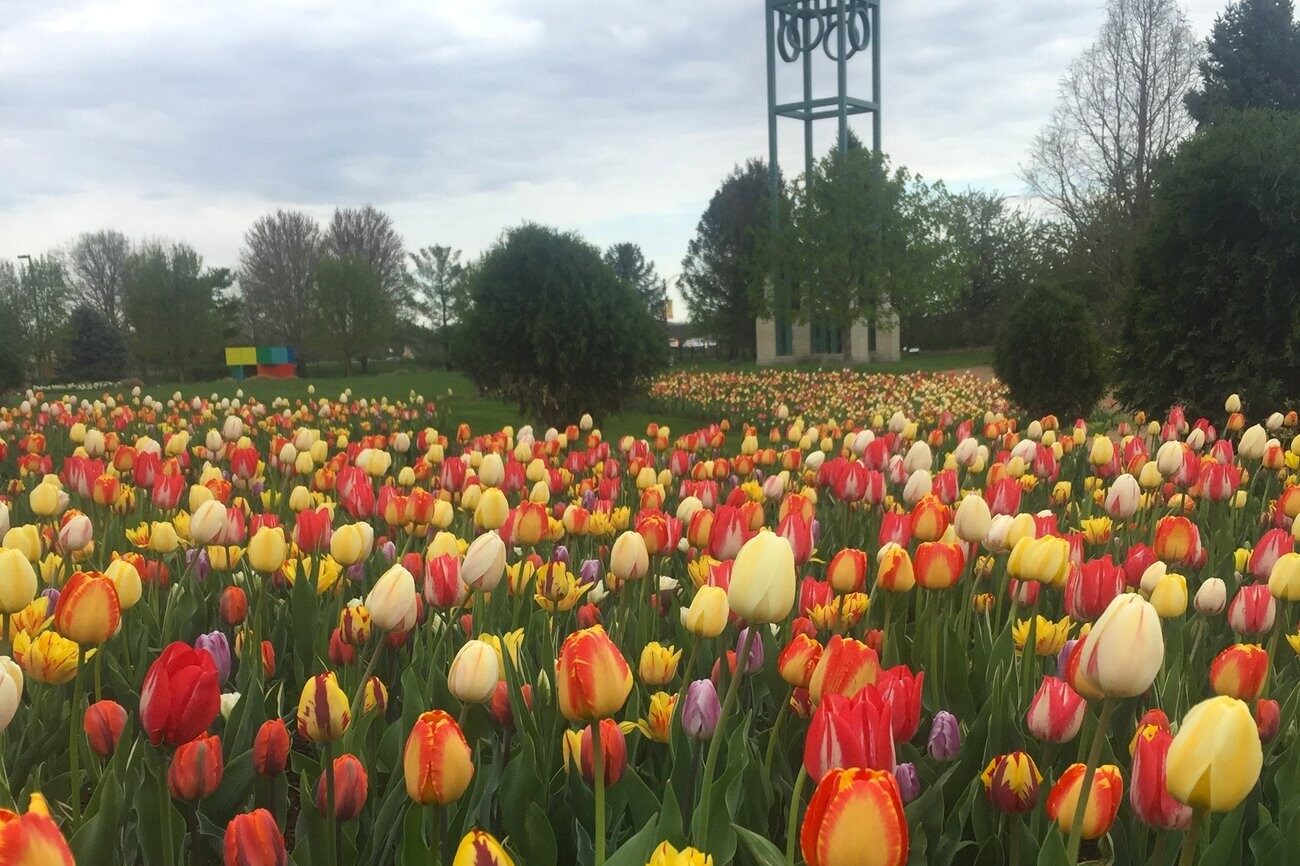As in previous years, more than 50,000 tulips will burst forth soon at Reiman Gardens in Ames. (Photo: Aaron Steil)
By Aaron Steil
There’s just something about tulips. Their simple form and beautiful blossoms make them one of my favorites. But what makes them even more special is the fascinating backstory of how a small flowering bulb from Central Asia became a worldwide symbol of spring.
Tulips were first cultivated by the Turks as early as 1000 C.E. They were introduced to the Netherlands in the late 1500s when the Flemish ambassador to the Ottoman court in Constantinople spotted the colorful flower (presumably named after the Turkish word for “turban”) in the palace gardens and sent a few bulbs to the director of the Hortus Botanicus in Leiden, Netherlands. This was the start of the amazing bulb fields we see today in the Netherlands and the reason the flower symbolizes Dutch identity.
Over the next few decades, the tulip became a popular commodity for its beauty. New hybrids were introduced with bright colors, dramatic flame-like patterns and frilly petals. These flowers were seen as rarities and a sign of high status, and bulbs were sold for unbelievably high prices during a period called “tulip mania.” At the height of the craze, a hybrid variety called Semper Augustus, which featured dramatic streaks of red and white, sold for more than 5,500 guilders (today, that’s about half a million U.S. dollars). The inflated values didn’t last long, and they collapsed in February 1637. This rise and sudden fall of the tulip prices is considered to be the first economic bubble in history.
Interestingly, the beautiful patterns of Semper Augustus and other highly coveted “broken”-pattern tulips were caused by a virus that weakens the plant, stunting its growth and accelerating its death. Today’s streaked tulips, called Rembrandt types, are virus-free cultivars named after the famous Dutch artist of the same era, who added tulips to several of his paintings from the era of tulip mania.
See a piece of history in Iowa …
While tulips today don’t garner the astronomical prices they once did, they’re still prized by gardeners and fans around the world. Here in Iowa, you can see beautiful tulip displays at the Tulip Festival at Wilson’s Orchard in Cumming (now through May 4), Tulip Time in Pella (May 2-3) and the Orange City Tulip Festival (May 15-17) in northwest Iowa. Lovely plantings also can be enjoyed at public gardens across the state, like Reiman Gardens in Ames, where staff and volunteers plant more than 50,000 bulbs each year.
If you’re looking to travel, stunning displays can be found in Holland, Michigan, and the Skagit Valley in Washington state, where many tulips are cultivated for sale. Internationally, millions of bulbs can be found each year in Ottawa, Canada, the famed Keukenhof Garden in the Netherlands and Istanbul, Turkey (formerly Constantinople, where the whole story began).
 … or grow them yourself
… or grow them yourself
Aaron Steil is a consumer horticulture specialist with ISU Extension and Outreach and a frequent contributor to Iowa Public Radio and Iowa PBS.






